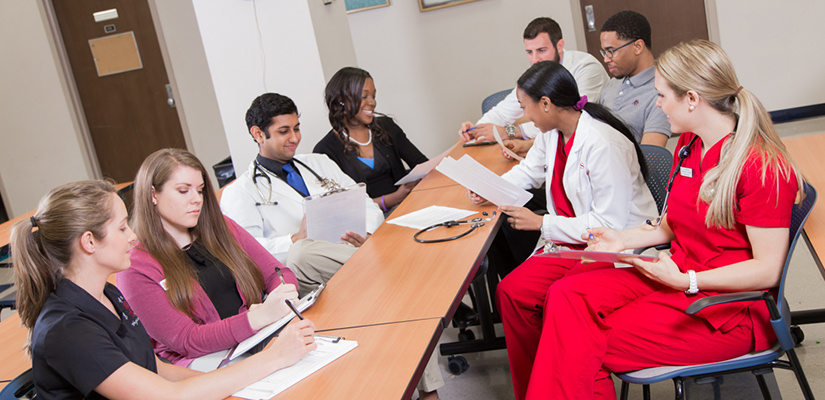Combining resources and working together makes more sense than trying to go it alone. That’s the driving belief behind the Interprofessional Education Collaborative push among the health sciences disciplines at the University of South Carolina. The overarching goal of the national initiative, led at USC by the Interprofessional Education for the Health Sciences Committee, is to find ways for students in medicine, nursing, pharmacy, physical therapy, public health, social work and speech-language pathology to learn from each other and become more efficient, effective health care professionals.
“If we don’t work as a team, then quality, safety and job satisfaction suffer,” says
Bev Baliko, an associate professor in the College of Nursing who has helped spearhead
the IPEC program. “Practices occur in silos and isolation. We don’t have true teamwork.”
The four core competencies of the national IPEC program stress mutual respect, defined
responsibilities, communication and teamwork. Interprofessional opportunities include
classes, clinical education, cocurricular activities and community engagement. USC
strives to meet those competencies via course offerings, though coordinating the schedules
of the 14,000 health science students across the USC system is a complicated endeavor.
While more than 2,600 students have taken part in the introductory Transforming Health
Care for the Future since 2012, other handson learning opportunities also provide
valuable experience.
“We’re in our second year of an HIV interprofessional training grant that involves
social work, pharmacy, nursing and medicine, with groups of students that train at
two-week intervals in our infectious disease clinic,” Baliko says. “That’s going wonderfully
well. Because they’re planning together and doing their assessments together, they
see where their disciplines overlap, where they differ and where they can complement
each other. Understanding builds respect.”
That speaks directly to an IPEC goal: to graduate competent health care professionals
capable of entering any health care system and communicating with other professionals
to improve patient outcomes. Other, more tactile aims of the USC push are to increase
health sciences enrollment and to obtain external funding for education and research.
“I would love to be able to do more classes. We’re a huge university, though, and
some of our programs are really large,” Baliko says. “We have to look at what’s feasible.”
Additional clinical practice programs, for instance, would facilitate more opportunities
for students, Baliko says. That, of course, would require additional funding for programs
that largely involve graduate students. USC has 17 nationally ranked health science
graduate programs as determined by U.S. News & World Report.
“If we want to recruit students and bill this as a strength, we need to have something
to offer them, so they can continue to learn with, from and about each other,” Baliko
says.
In April, Baliko and four other IPEC committee members attended training in Charlottesville,
and as the fall semester approached, committee members sat down for planning sessions
to assess the program’s progress.
“It’s an evolving thing. We look at the facilitator feedback and student feedback
and try to meet needs,” Baliko says. “We’re way more alike than different, especially
in our goals and some of the things that we do. If we understand that, we can better
work together to achieve a broader goal.”
